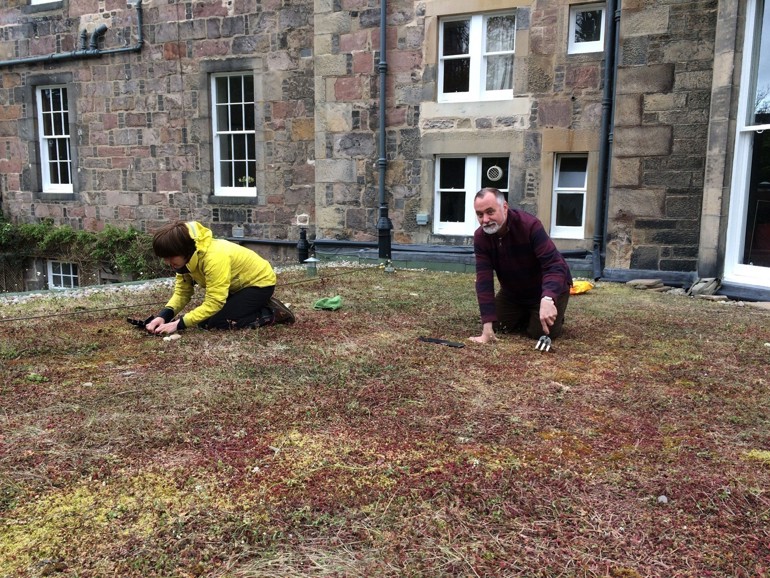Our work on habitat management spans urban and rural environments. It ranges from primary research to practical advice, actively engaging the public with greenspace benefits for biodiversity, ecological resilience and human well-being.
Examples of urban to rural projects are provided below:
Edinburgh Living Landscape
We are a founding member of the Edinburgh Living Landscape project, reflecting an increasing focus on our support for biodiversity as part of urban green infrastructure. Our contributions include practical training to help community groups achieve their ambitions for local biodiversity such as through organic edible gardening, public recording schemes for lichens as air pollution indicators and to encourage sustainable transport, work with Butterfly Conservation to expand greenroofs across Edinburgh as habitat patches for rare butterflies, development of demonstration raingarden projects for climate change adaptation, contributing to Edinburgh Adapts, and we deliver a major GIF- and HLF-funded project that celebrates the biodiversity and cultural value of Edinburgh's Shoreline.

Planting a green roof at the Edinburgh Chaplaincy Centre
Countryside Management
To inform better countryside management we work with land-owning partners to generate evidence from field sampling to statistical models, delivering scenarios exploring alternative options and minimising biodiversity risk.
- Epiphyte Scenarios: We provided a toolkit of bioclimatic and woodland management scenarios for 382 of Scotland's epiphytes. It can be used to investigate the effects of changing tree composition - for example, ash dieback and replacement with substitute species - under future constraints of climate change. The toolkit is supported by a demonstration piece that helped inform strategic planning for Glasdrum National Nature Reserve.
- Spatial Planning: We developed NetLogo models used by Scottish Natural Heritage to plan woodland regeneration options within Scotland's National Nature Reserves. These are spatially explicit models to show exactly which woodland stands could be safely regenerated (to allow a new generation of trees, but at the expense of shade intolerant niche-specialist species), given their distance to other suitable habitat that is within colonisation range of threatened woodland species.

